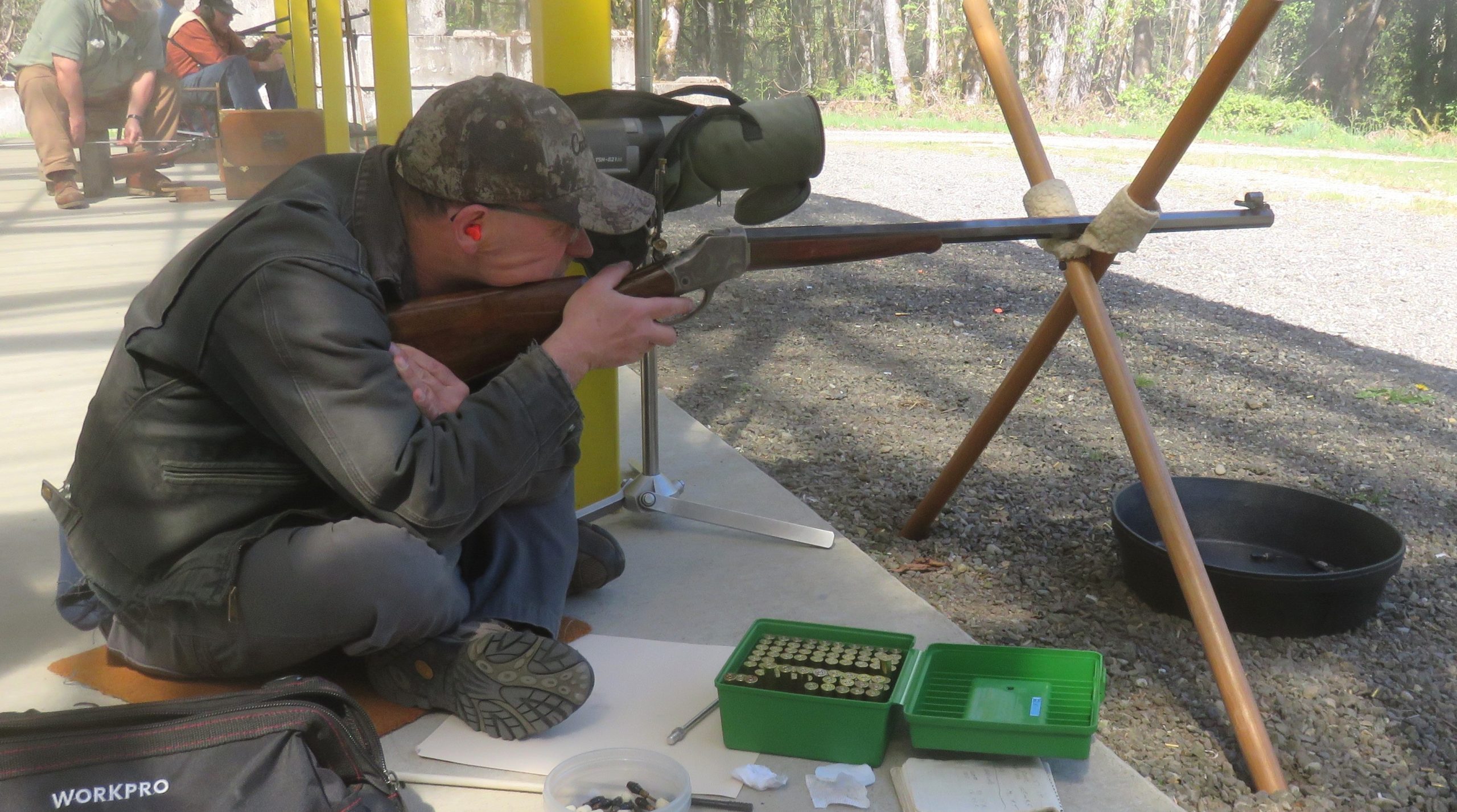
By Mike Nesbitt | Contributing Editor
The annual Paper Patch Match of the Black River Buffalo Runners, at the Capitol City Rifle & Pistol Club near Olympia, Washington, for this year is over.
While my shooting could have been better, the match itself was almost perfect. That reflection is aimed at almost everything; from the gorgeous and clear weather we enjoyed and most certainly including the winner’s very good shooting with paper patched bullets.
Paper patched, or paper wrapped, bullets were rather prominent in the 1870s and a few cartridges, primarily for black powder cartridges used in single shot rifles, were available with factory loaded paper patched bullets up through the World War I era. The reason for the paper wrapping is simply to reduce the contact of the lead bullets with the steel of the rifle’s bore, to reduce leading. We can easily say that the paper patched bullets were actually our first jacketed bullets. The paper patches and the more modern copper alloy jackets serve the same purpose.
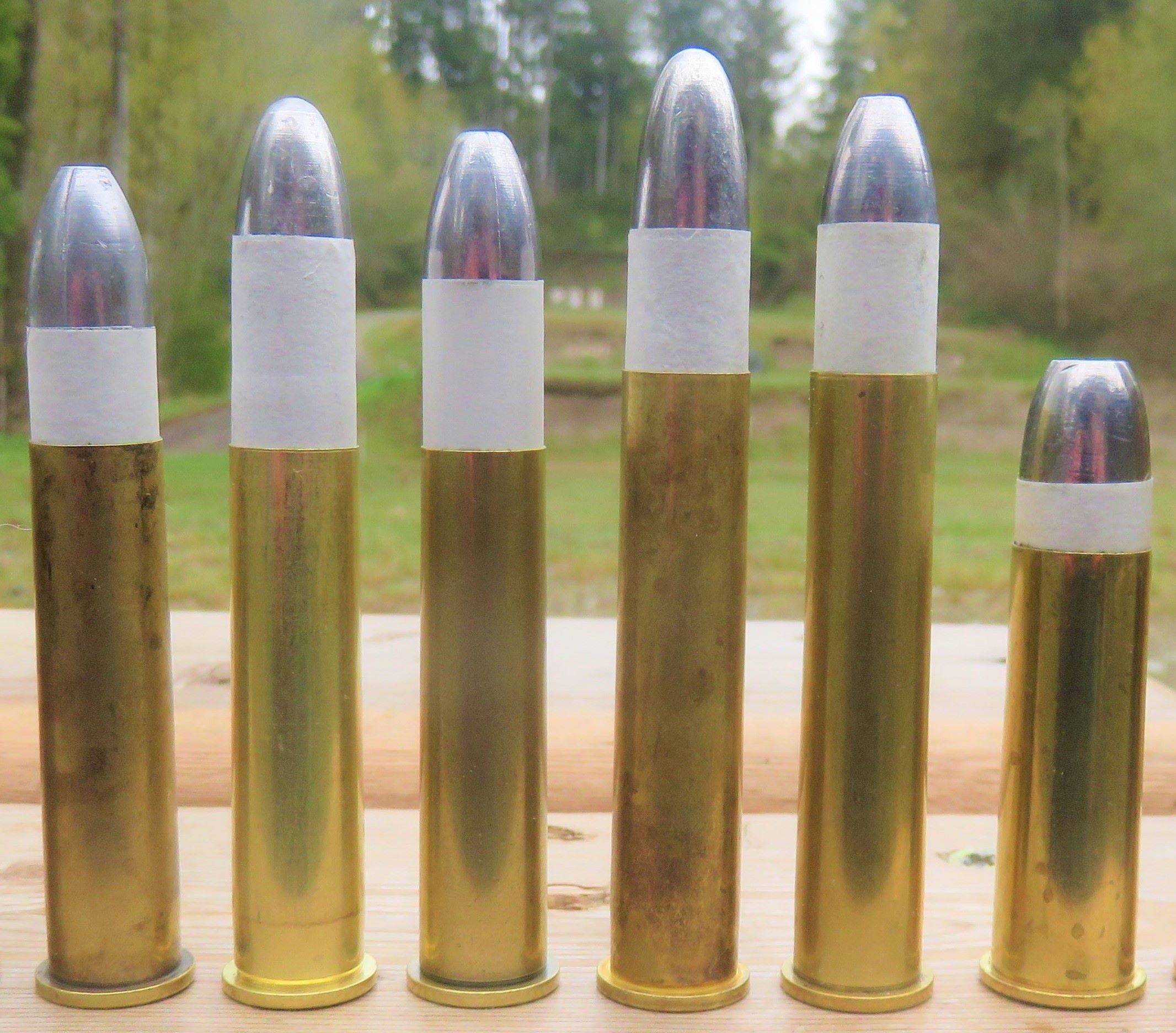
Shooting paper patched black powder cartridges today is a very interesting part of loading and using black powder cartridges.
To sound rather non-technical for just a moment, for many of us nothing looks more “Old West” than a properly wrapped paper patched round. That’s especially true when the cartridge is one of the larger numbers for the old Sharps rifles, such as Tom Witt’s .45-90. Seeing one of those loads just held in the hand or a cartridge belt full of them is simply nostalgia to behold.
One question that is commonly asked about shooting paper patched bullets is are they more accurate than the grease groove bullets. The most honest answer I can give to that is to simply say, I don’t think so. Most of the big black powder cartridge shooting matches are won with the grease groove bullets but, at the same time, the paper patched bullets certainly have their following. Shooting well prepared loads with paper patched bullets certainly have all of the ingredients needed for accurate shooting, as we might guess.
Using paper patched bullets is, in my opinion, mainly a great way of doing things like they used to be done, back in the days of Buffalo Bill and the famous buffalo hunters. Those old buffalo hunters cast and patched their bullets right in camp and reloading ammunition was really part of the hunt. To go along with that, the Black River Buffalo Runners sponsor the Paper Patch Match where the loads using paper patched bullets are put to the competitive test. Shooters using grease groove bullets can still complete in this match, but the priority goes to the paper patch shooters, which simply means that shooters using “greasers” get their awards after the paper patchers get their recognition.
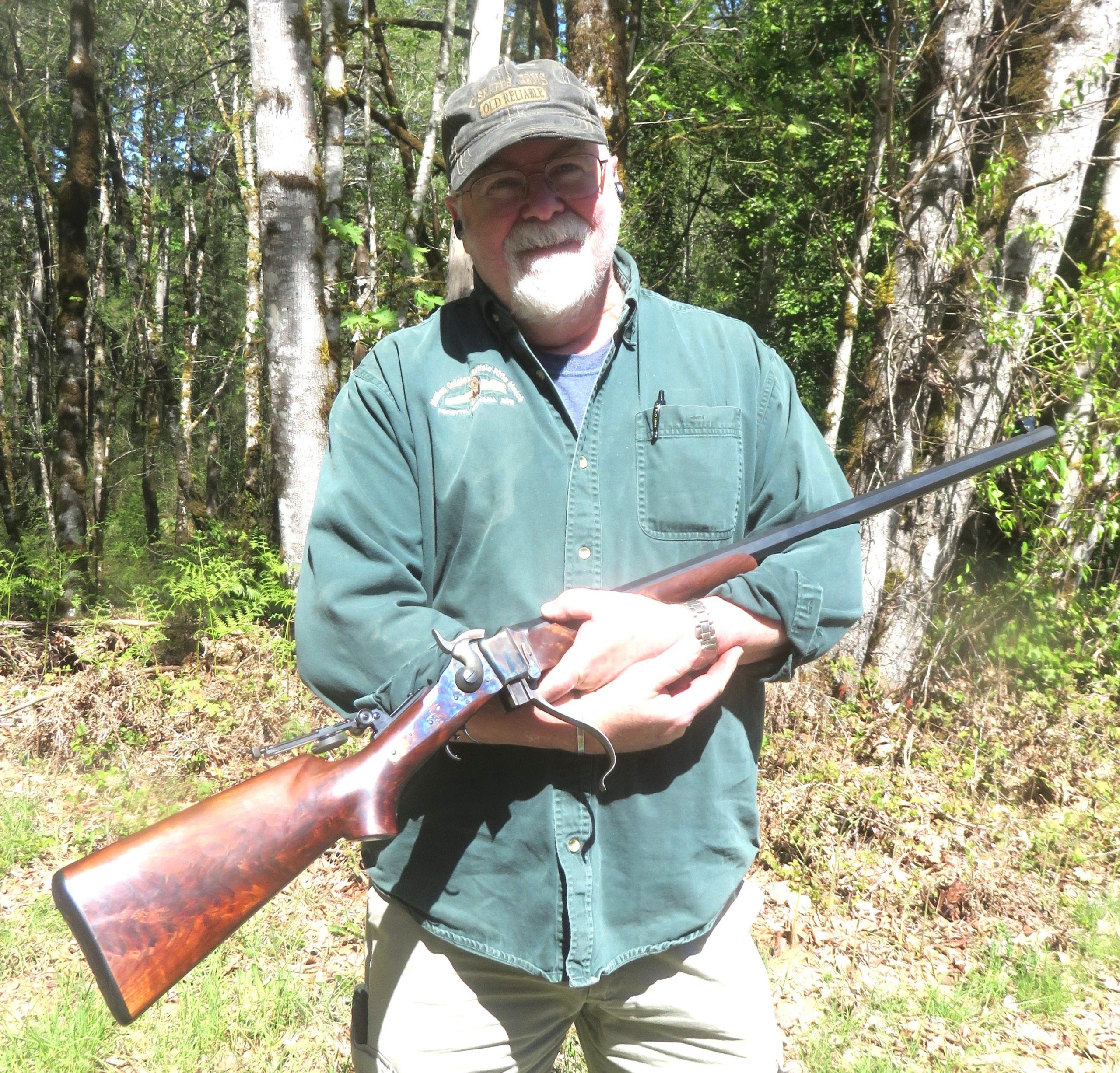
At our recent Paper Patch Match, we had fifteen shooters which makes this a small, more or less hometown style shooting match. Among those shooters were eight who used paper patched bullets, so the field was fairly evenly split, with seven more shooting with grease groove cast bullets.
In a previous story I told about my preparations for this match, both developing the load for my .45-70 with 500-grain paper patched bullets plus the sighting in with those loads. Just to re-cap a tiny bit, that load used the 500-grain bullets over 65 grains of Swiss 1½ Fg powder which gave the bullets the rather modest velocity of 1,188 feet per second out of my Sharps rifle’s 28-inch barrel. In practice, I was able to get sight settings for the 100 and 200-yard distances but now, after shooting in the match, my wish is that I could have gotten more practice. Yes, I’ll remember that for next year.
My shooting wasn’t bad, it’s just that my shooting could have been a lot better. My partner for this match was Jerry Mayo, and we’ve partnered together for the last few years. Jerry shot in the first relay while I spotted his shots. Then, when the second relay got started, Jerry was spotting my shots. Jerry likes to start on the 200-yard target while I commonly begin on my 100-yard target. That’s just our shooters’ choice.
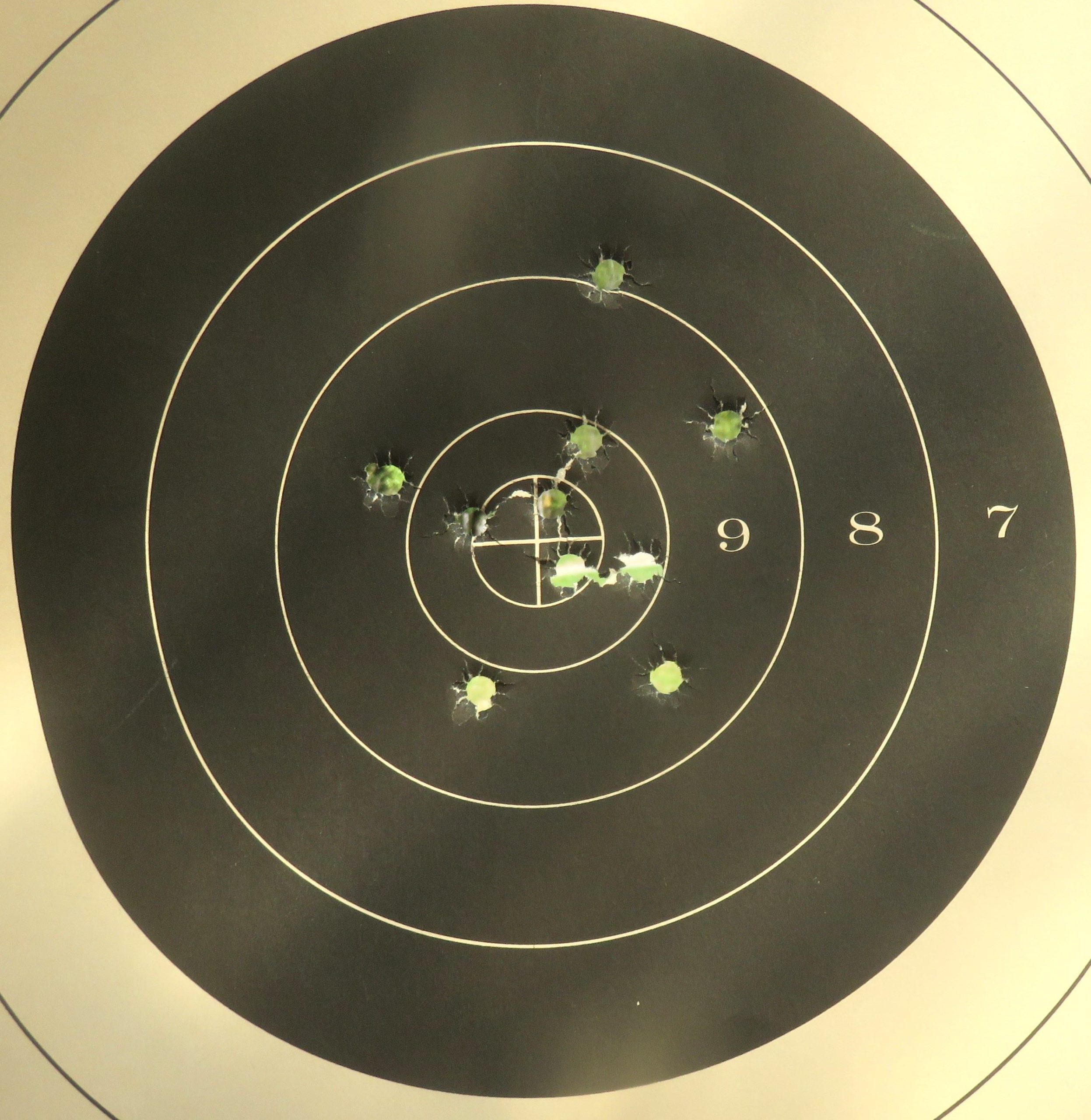
So, I took my sitting position behind the cross-sticks and began shooting at the 100-yard target. Jerry spotted my shots very well, reporting that those shots were going rather high. I could have and should have made a sight adjustment, but I didn’t do that. Perhaps I thought my shots would begin going lower by themselves, which sometimes happens. My loads contained bullet lube under the paper patched bullets but I was also wiping between shots, which is something rather new for me in a shooting match, and perhaps I was more concerned about wiping the bore than adjusting the elevation.
Those ten shots all scored, all in the top half of the target, with three of them wandering out of the black. I didn’t get as tight a group as was gotten in practice but I’m not complaining. My score on that target was 77 out of the possible 100 points.
Then my scope, and I was the only scope shooter on the line in this match, was adjusted for the 200-yard target. While my shots went high at 100 yards, they went low at 200 yards with no bullets striking above the middle of the target. Even so, my 200-yard score beat my 100-yard shooting but by just two points, giving me a 79. That gave me a total of 156 for the two targets, which put me in fifth place among the paper patchers.
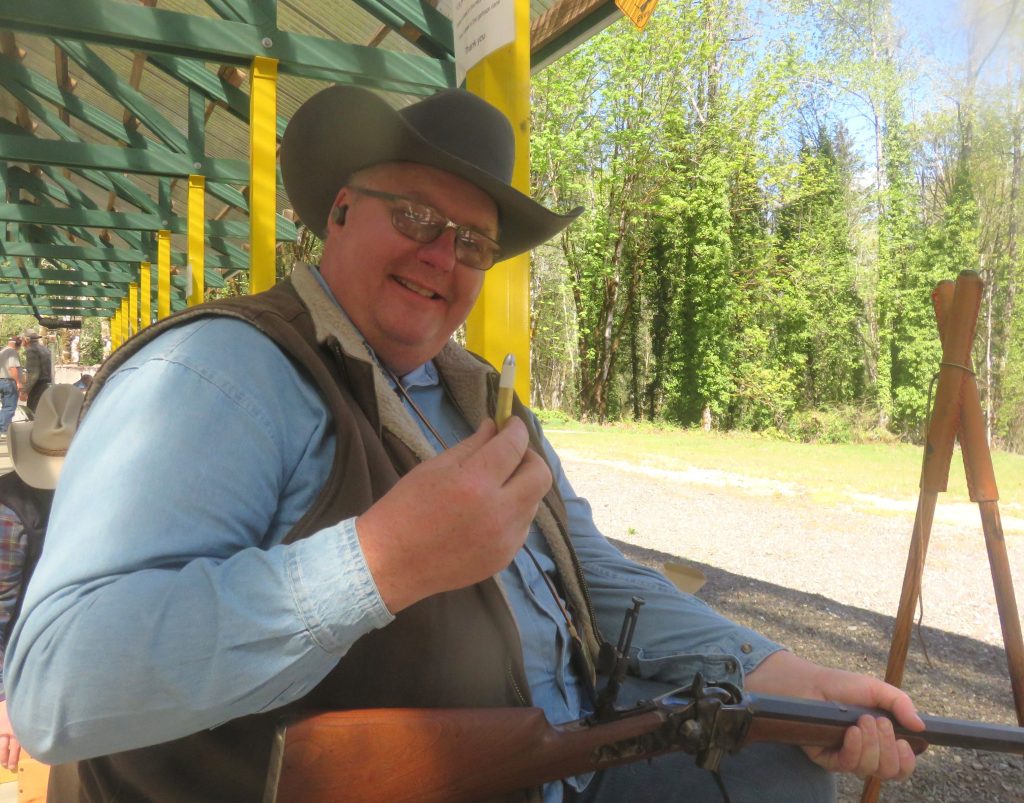
The best shooting of the day was done by Allen Cunniff, shooting paper patched bullets out of his C. Sharps Arms ’74 rifle in .40-65 caliber. Allen shot a very impressive 95-3X at 100 yards and then beat his own score by firing a 97-3X at 200 yards. That gave him a score for the day of 192-6X. Allen was followed by Phil Wiebe, using a C. Sharps Arms Highwall in .38-50 Remington caliber, a cartridge that was designed by L.L. Hepburn, who shot a score of 88 on each of his targets for a total of 176 points. Behind Phil was Bob DeLisle, shooting his .45-70 Sharps and getting an 84-X at 100 yards and 82 at 200 yards for a daily score of 166. Mike Holeman, shooting another .45-70 with paper patched bullets, scored 87 at 100 yards and a 74 at 200 yards for fourth place with a 161.
Those shooting grease groove bullets in this match did almost as well. Dick Elliott, shooting a Browning Highwall in .40-65, got a total score of 190, just two points behind Cunniff. He was followed by Ken Kurfurst, shooting another Highwall, a rebuilt original, but in .45-90 caliber, with a score of 179. Also getting a 179 but with a lower score than Ken had on the 200-yard target was “Loco Jeff” Ritter, shooting another .40-65.
One very nice thing about shooting with these fellows is their eagerness to help one another with loads and shooting. I asked Cunniff about the loads for his .40-65 and he outlined his loading and procedures in detail. He begins with fire-formed cases, neck sized and then expanded to give the bullets a good snug fit. Those cases are by Starline. He was using CCI Large Pistol primers. The paper patched bullets were cast in an Accurate Molds’ #40-385P for a tapered bullet, from .394 to .399”, which weighs 390 grains with a 20-1 alloy. Those were patched with two wraps of 100% cotton paper which gave the wrapped bullet a diameter of .404”. His powder charge was 60 grains of Swiss 1 ½ Fg which was compressed just a bit under a .060” Walters’ veggie wad. The bullets were seated only .350” into the cases before receiving a taper crimp to hold those bullets in place.
Notice that no bullet lube was included. In place of any lube, Allen wipes the bore between shots with one wet patch, usually dampened with a black powder bore cleaner, and then one dry patch. That’s actually a typical procedure for shooters who use paper patched loads without lube beneath the bullets.
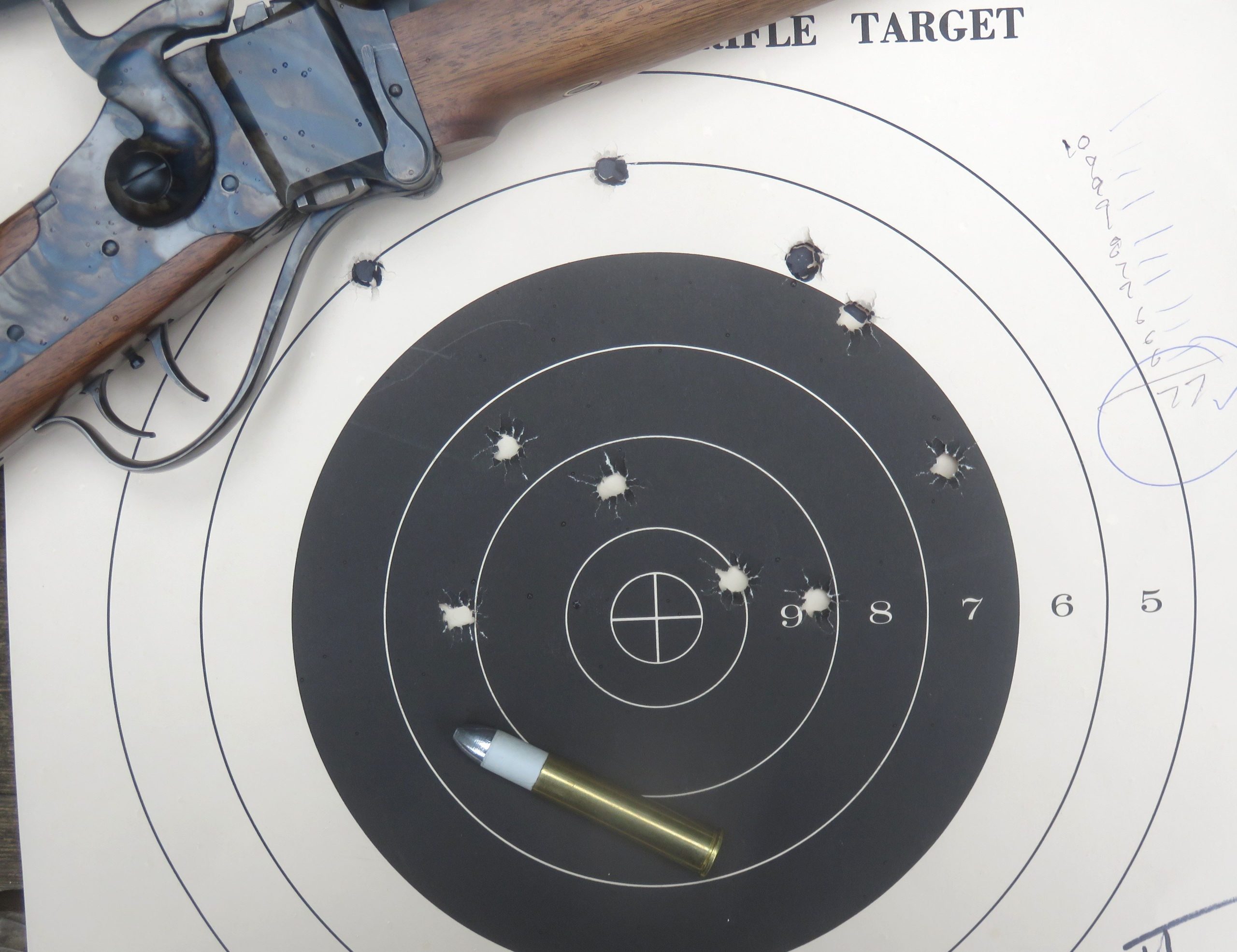
Of course, those good loads are only part of Allen’s secret to such good shooting. He loads his ammo with precision and consistency, most certainly, but he also practices with real seriousness, while taking his practice shots from the sitting position. Of course, he practices with his favorite paper patched loads. If there are any hidden secrets to good shooting, black powder or otherwise, they will be found in the practice a shooter gets. The good rifles and carefully loaded cartridges will only offer support for that practice and then even more practice. And Allen dedicates his practice to the individual rifle that he will be using.
As another and perhaps opposite example, I use too many different rifles and I know it. But using those various rifles has rewards of its own, just too often not in higher target scores.
And shooting in a Paper Patch Match with fellow black powder cartridge rifle shooters has other rewards of its own. The great comradery is very evident, every shooter is welcome.
Now it is time to review this Paper Patch Match in hindsight and begin preparing for this same event which will take place again in 2025. At this moment, I have no idea what rifle I’ll be using in that coming match but at least I have a year to work on it. If I had any real sense about it, combined with the urge to actually do better, I’ll stay with my .45-70 using the load already developed and practice my shooting from the sitting position, right beside Cunniff.



